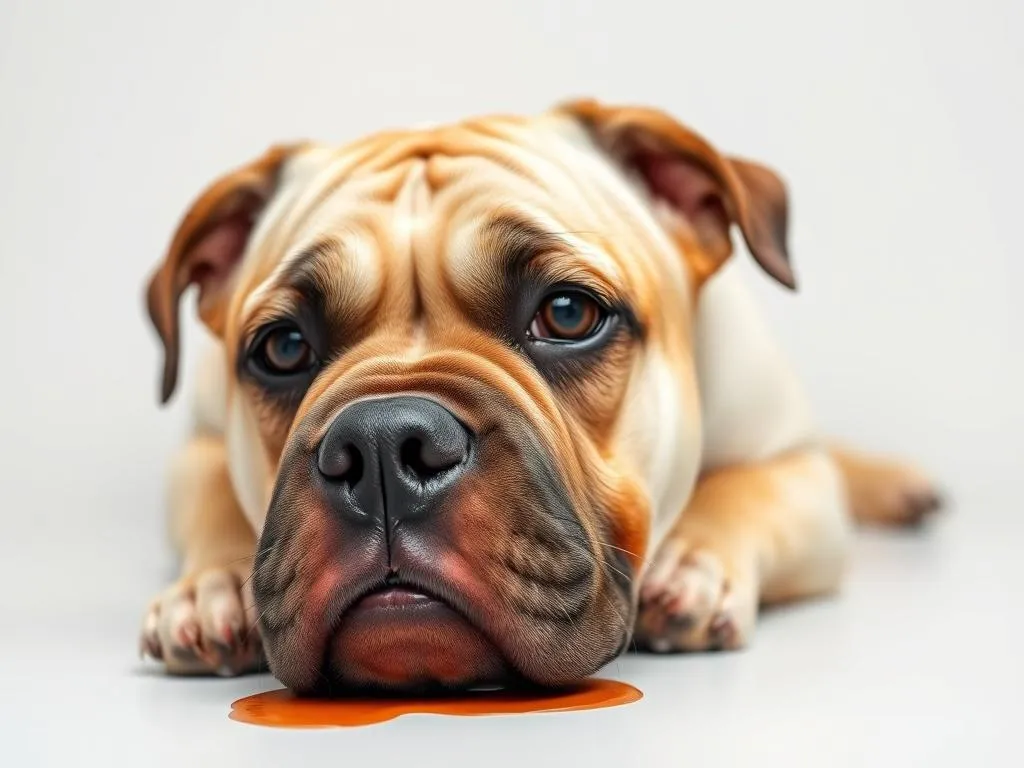
Introduction
Overview of Dog Nutrition
A balanced diet is essential for the overall health and well-being of our canine companions. Just like humans, dogs require a variety of nutrients to thrive, including proteins, fats, carbohydrates, vitamins, and minerals. Poor nutrition can lead to numerous health issues, such as obesity, skin problems, and digestive disorders. One often overlooked aspect of dog health is the impact of nutrition on tear stains, a common issue among many dog breeds.
Understanding Tear Stains
Tear stains are the dark streaks that can appear under a dog’s eyes, often resulting from excessive tearing. This condition can be both a cosmetic concern and a sign of underlying health issues. Addressing tear stains is vital not just for aesthetics but also for preventing potential complications that could arise from skin irritation or infections in the affected areas.
Purpose of the Article
This article aims to provide insights into the best dog foods for tear stains and educate pet owners on how to choose appropriate nutrition to help mitigate this issue. By understanding the connection between diet and tear stains, dog owners can make informed choices to promote their pets’ health.
Understanding Tear Stains
What Are Tear Stains?
Tear stains form when excess tears overflow from a dog’s eyes, causing moisture to accumulate on the fur beneath the eyes. This moisture can lead to discoloration, often appearing reddish-brown due to the presence of porphyrin, a pigment found in tears. Certain breeds, such as Poodles, Maltese, and Bulldogs, are particularly prone to tear staining.
Causes of Tear Stains
Several factors contribute to the development of tear stains:
-
Genetics and Breed Predisposition: Some breeds are genetically predisposed to excessive tearing due to anatomical features, such as shallow eye sockets or abnormal tear duct placement.
-
Allergies and Sensitivities: Food allergies and environmental sensitivities can trigger excessive tearing. Common allergens include grains, chicken, and certain artificial additives.
-
Infections: Bacterial or yeast infections around the eyes can cause irritation and increased tear production, leading to staining.
-
Poor Diet and Nutrition: A low-quality diet lacking essential nutrients can exacerbate tear staining issues.
Consequences of Tear Stains
Tear stains are not merely cosmetic. They can lead to skin irritation, infections, and discomfort for the dog. Over time, untreated tear stains can cause the skin to become inflamed and may result in chronic issues that affect the dog’s well-being.
Nutritional Factors Affecting Tear Stains
Role of Diet in Tear Stain Management
Diet plays a crucial role in managing tear stains. A well-balanced diet can help regulate tear production and reduce the likelihood of staining. Certain ingredients can promote healthy tear function and minimize the risk of irritation.
Key Nutrients for Healthy Tear Production
When selecting dog foods, look for the following key nutrients:
-
Omega Fatty Acids: Omega-3 and Omega-6 fatty acids help maintain skin and coat health. They also have anti-inflammatory properties that can reduce irritation around the eyes.
-
Antioxidants: Ingredients rich in antioxidants, such as blueberries and spinach, support the immune system and promote overall health, potentially reducing the risk of infections that contribute to tear stains.
-
Vitamins and Minerals: Essential vitamins, such as Vitamin A and B vitamins, play a vital role in maintaining healthy eyes and skin.
Foods to Avoid
To help manage tear stains, it’s essential to avoid certain ingredients in dog foods:
-
Common Allergens: Grains, chicken, and other common allergens can provoke allergic reactions, leading to increased tearing.
-
High-Carbohydrate Foods: Foods high in carbohydrates can contribute to inflammation and should be minimized.
-
Artificial Additives and Preservatives: Avoid foods containing artificial colors, flavors, and preservatives, as these can trigger allergic reactions and other sensitivities.
The Best Dog Foods for Tear Stains
Top Recommended Brands
When it comes to selecting the best dog foods for tear stains, several brands stand out for their commitment to quality ingredients and nutritional integrity. Here’s a look at some top choices:
Detailed Reviews of Top Dog Foods
Brand A: Wellness Core Grain-Free
Ingredients: This formula contains high-quality protein sources such as turkey and chicken, alongside fruits and vegetables rich in antioxidants.
Benefits: The grain-free formula helps reduce the risk of food allergies, while the inclusion of omega fatty acids supports skin health.
Customer Reviews: Pet owners report significant improvements in their dogs’ tear stains and overall coat condition after switching to this brand.
Brand B: Blue Buffalo Basics
Ingredients: This limited-ingredient diet features a single animal protein source, sweet potatoes, and pumpkin, which are gentle on the digestive system.
Benefits: The absence of common allergens minimizes the risk of tear staining, while pumpkin provides fiber to support digestive health.
Customer Reviews: Users have noted a reduction in tear stains and skin irritations after feeding their dogs this formula.
Brand C: CANIDAE Grain-Free Pure
Ingredients: This food includes multiple protein sources, including lamb and fish, along with wholesome ingredients like peas and lentils.
Benefits: The grain-free recipe is designed to be easy on sensitive stomachs, and the omega fatty acids promote healthy skin and coat.
Customer Reviews: Many pet owners have experienced positive results, with reduced tear stains and improved overall health.
Brand D: Merrick Grain-Free Texas Beef & Sweet Potato
Ingredients: This high-protein recipe features real beef as the first ingredient, combined with nutrient-dense sweet potatoes and peas.
Benefits: The grain-free formula helps to prevent allergies, while the high protein content supports muscle development and overall health.
Customer Reviews: Users have praised this food for its impact on tear stains, with many reporting a noticeable difference in their dogs’ appearance.
Homemade Dog Food Options
For those interested in preparing meals at home, creating a balanced diet can also help reduce tear stains. Here are some recipes and tips:
Basic Chicken and Rice Recipe
Ingredients:
– 1 cup of cooked chicken, shredded
– 1 cup of brown rice
– 1 cup of carrots, steamed and chopped
– 1 cup of green beans, chopped
Instructions: Combine all ingredients in a bowl and mix well. Serve to your dog in appropriate portions.
Benefits of Homemade Diets
Homemade diets allow you to control the ingredients, ensuring that your dog receives high-quality nutrition without common allergens. Moreover, fresh ingredients can be more palatable for picky eaters, leading to better overall nutrition.
Additional Tips for Reducing Tear Stains
Regular Grooming Practices
Routine grooming is essential for maintaining your dog’s appearance and health. Here are some tips:
-
Cleaning the Face and Eyes: Regularly wipe your dog’s face with a damp cloth to remove any moisture and debris that can contribute to tear stains.
-
Recommended Grooming Tools: Use a soft, clean cloth or specially designed pet wipes to gently clean the area around the eyes.
Hydration and Water Quality
The quality of your dog’s drinking water can impact tear stains. Here’s how:
-
Impact of Water Quality: Contaminated or low-quality water can lead to health issues that exacerbate tear stains.
-
Best Practices for Ensuring Clean Drinking Water: Always provide fresh, filtered water. Clean your dog’s water bowl regularly to prevent bacterial growth.
Consulting a Veterinarian
If tear stains persist despite dietary changes and grooming efforts, consulting a veterinarian is crucial.
-
When to Seek Professional Advice: If you notice other symptoms alongside tear stains, such as redness or swelling around the eyes, a vet visit is warranted.
-
Importance of a Vet’s Role in Diet and Health: A veterinarian can help identify underlying health issues and recommend appropriate dietary changes tailored to your dog’s specific needs.
Conclusion
Maintaining a nutritious diet is vital for pet owners who wish to manage tear stains effectively. By understanding the causes and nutritional factors involved, dog owners can make informed choices that promote their pets’ overall health and appearance.
Encouragement for Pet Owners
Taking proactive steps in your dog’s nutrition can significantly enhance their quality of life. It’s essential to monitor their diet closely and make adjustments as necessary.
Call to Action
We encourage readers to share their experiences and suggestions on managing tear stains. Every dog is unique, and your insights could help others seeking solutions to this common problem.









